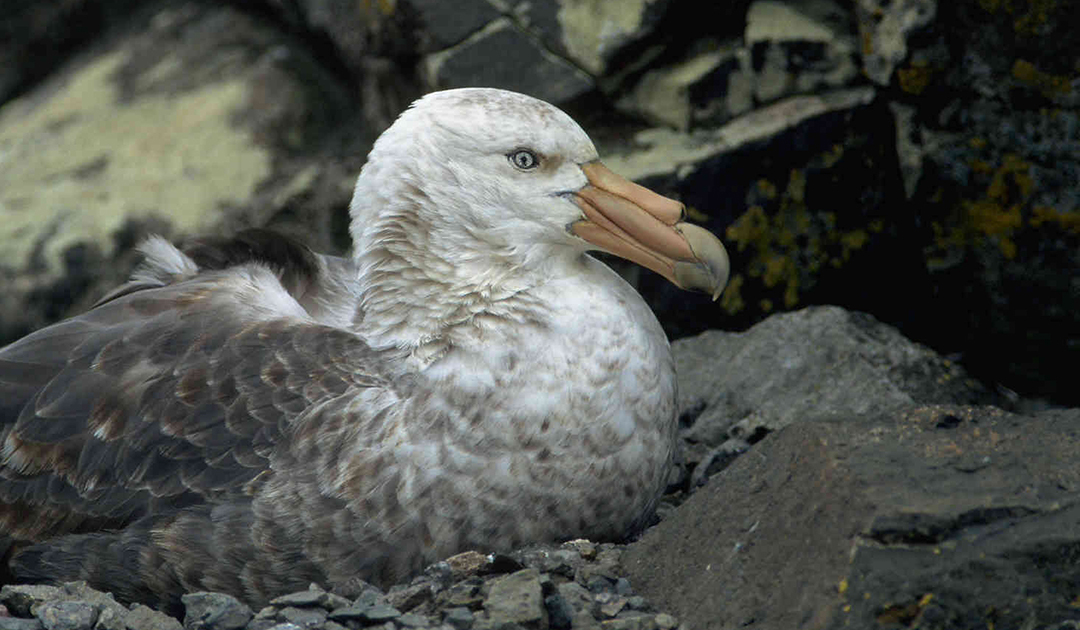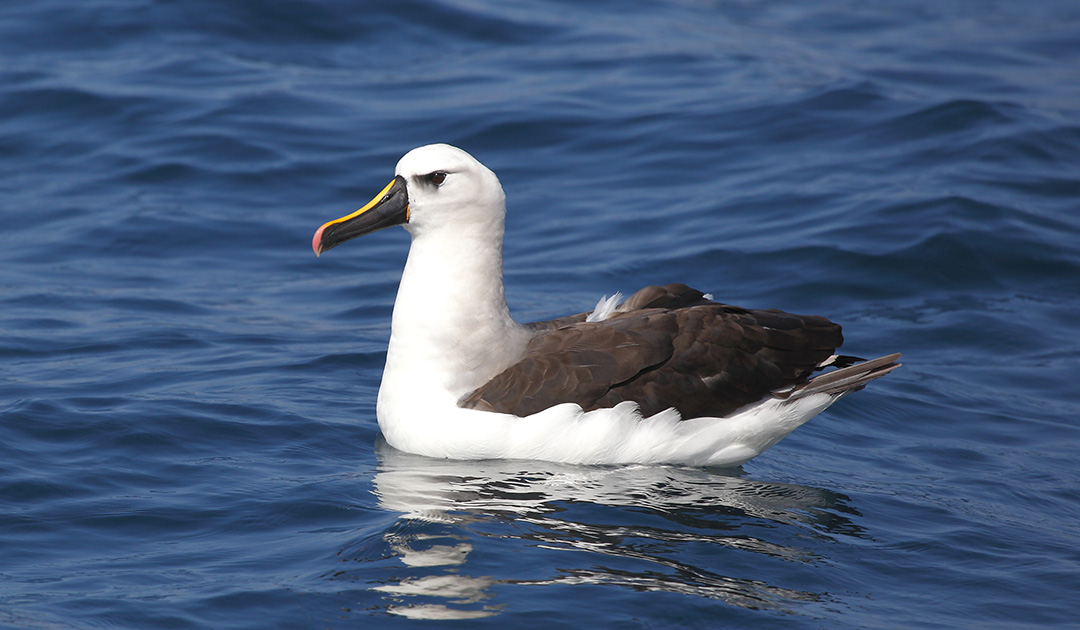
Antarctic and sub-Antarctic waters are known for their harsh, often hostile conditions. Those who want to survive in this environment need a perfect strategy. Whales, seals, penguins and other seabirds have adapted perfectly to this habitat and cope very well with the natural conditions. But these are increasingly going out of whack and some of the species are already developing new hunting strategies, such as the Southern Giant Petrel. On Gough Island in the South Atlantic, scientists have observed for several years that males of the goose-sized seabirds kill and eat breeding yellow-nosed albatrosses. The endangered albatrosses will be in dire straits as a result of these attacks if this behavior of the giant petrels continues to spread.
Giant petrels (Macronectes sp.) are large, fearsome, predatory seabirds of the petrel family that forage in the Southern Ocean and are known for their strength and aggressiveness. They are divided into Northern (M. halli) and Southern Giant Petrels (M. giganteus), whose ranges overlap, with Southern Giant Petrels, as the name implies, occurring further south. Their breeding range extends throughout the Southern Ocean, with the northernmost colonies on Gough Island and the southernmost on the Antarctic mainland. In winter, they migrate as far north as the subtropics of South America, Africa, and Australia.
Gough Island is a volcanic island in the South Atlantic Ocean and is part of the British Overseas Territory of St Helena, Ascension and Tristan da Cunha. It lies about 2,400 kilometres northeast of South Georgia and 2,700 kilometres west of Cape Town.

In the petrel family, giant petrels exhibit a unique feeding behavior – they find their food both on land and at sea. As opportunists, they prey on almost anything that gets in front of their beaks: seal pups, penguin chicks and sick or injured adult penguins, chicks of other seabirds, and at sea they even attack sperm whales. They also feed on carrion, thus acting as health police. Some males of Southern Giant Petrels exhibit an unusual behavior on Gough Island that was discovered by scientists only a few years ago – they attack healthy adult Yellow-nosed Albatrosses sitting on their nests at night, killing and then eating them. Until now, the giant petrels were only known to prey on albatross chicks.
A team of researchers from the British Royal Society for the Protection of Birds (RSPB) documented this terrifying behaviour on video for the first time and published its discovery in February this year in the journal Polar Biology. Michelle Risi, wildlife ecologist at the RSPB and lead author of the study, described to Jake Buehler of Hakai Magazine: “We returned to the area several times to assess the number of adult carcasses and were completely shocked to be finding several new ones each week.”
Between 2017 and 2019, the researchers found a total of 87 carcasses of adult albatrosses near their nests in areas with long-term monitoring. In 2019, they installed 16 cameras, monitoring 32 nests during the breeding season between September and January. At least six different male Southern Giant Petrels independently attacked 11 breeding Yellow-nosed Albatrosses, killing and eating five of them, according to the footage. The breeding success of the camera-monitored albatross nests was correspondingly low, at just under 19 percent.
However, these attacks were only observed in two of the eleven study areas and the scientists cannot yet say whether this behavior of the giant petrels is more widespread on Gough Island or whether only some individuals have adopted this new hunting method. The researchers can also only speculate about the reasons for the attacks at the moment. In their study, they rule out that a higher demand for food is responsible. Rather, it could be that climate change has altered food availability in the Southern Ocean, leading the giant petrels to explore new food resources.

For Yellow-nosed Albatrosses, already endangered – because of introduced mice on Gough Island, longline fishing, plastic pollution, climate change – this relatively new threat does not mean good things. The population could cope with attacks on chicks, provided they don’t overwhelm. However, if the new hunting strategy “gets around” among Southern Giant Petrels as successful and more and more adult albatrosses become victims, the threat to the albatross population could continue to increase. At least, in the coming southern summer, mice are scheduled to be eradicated on Gough Island, which would improve the albatross situation.
Julia Hager, PolarJournal
More on the subject:





